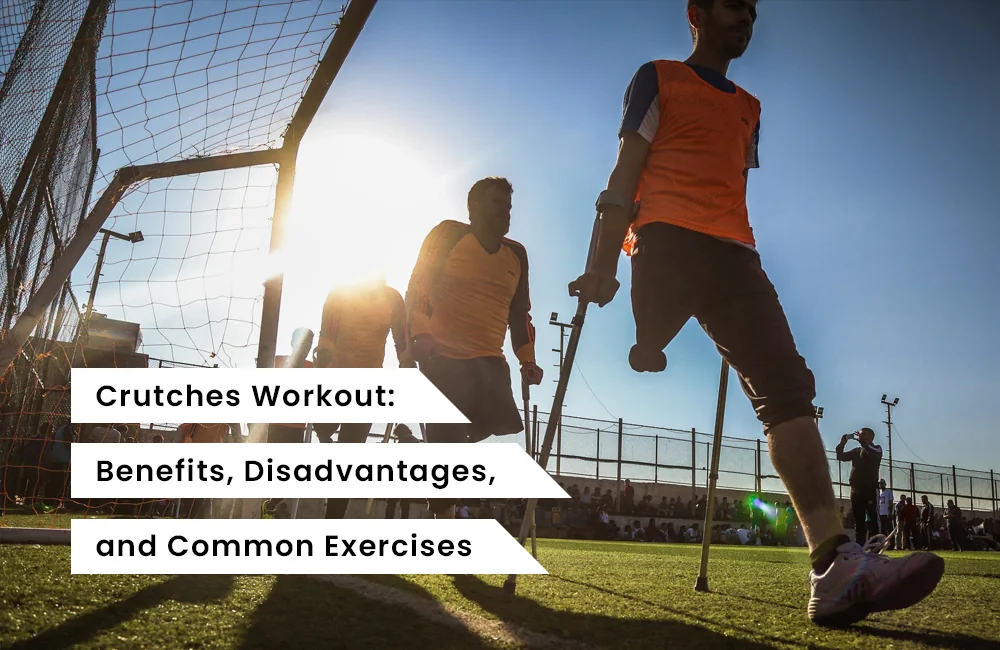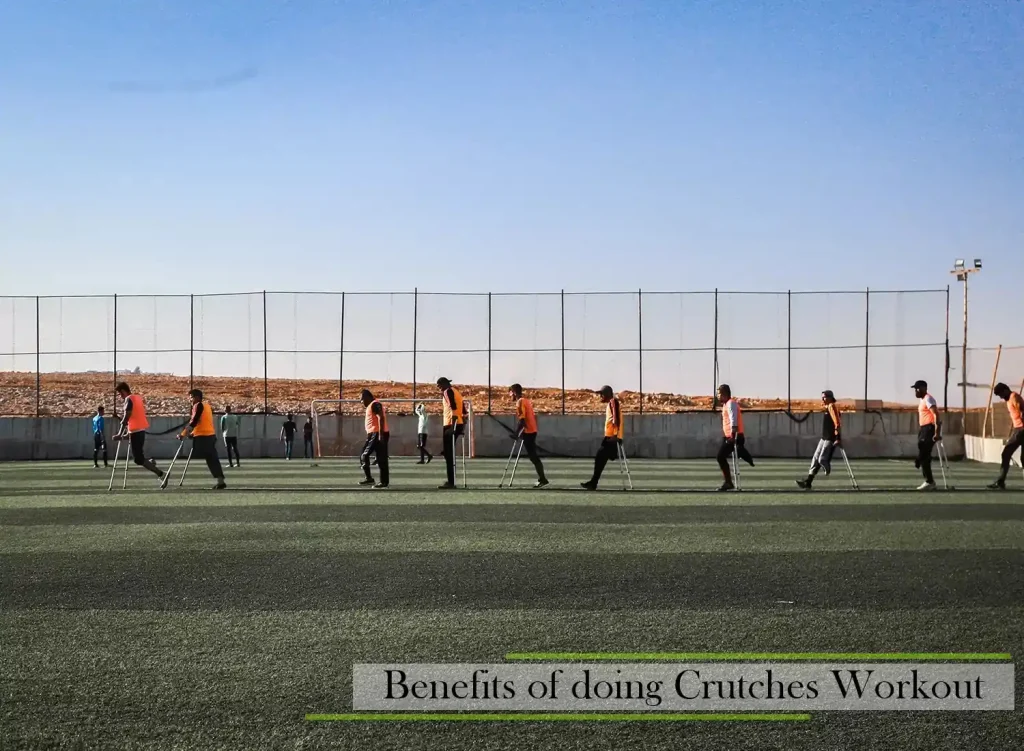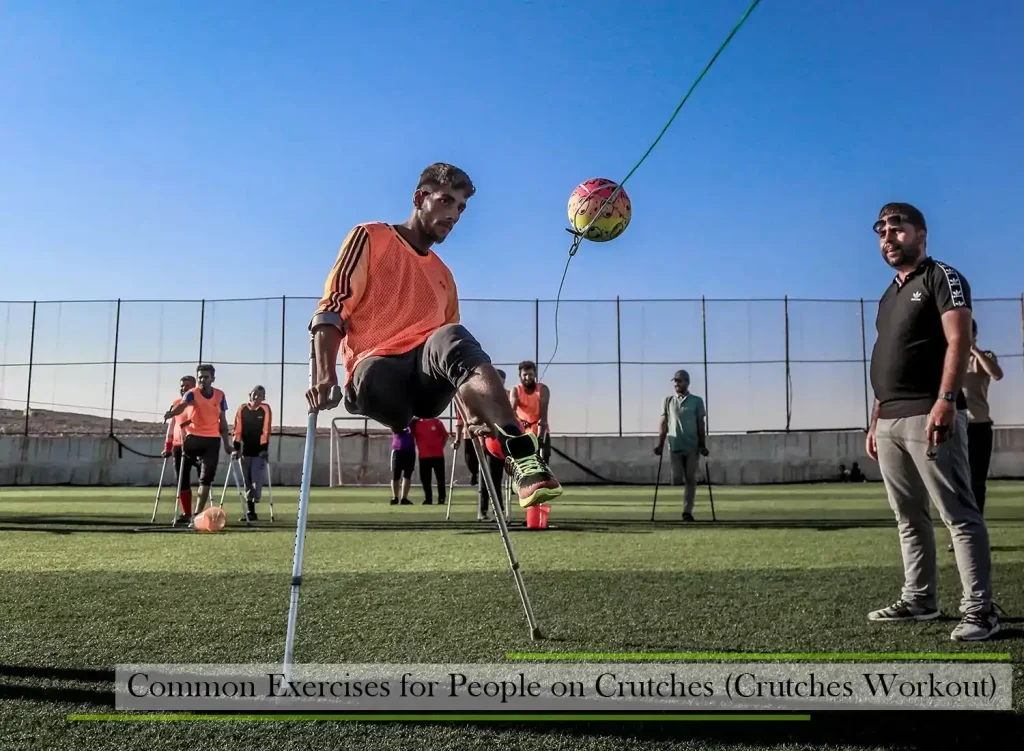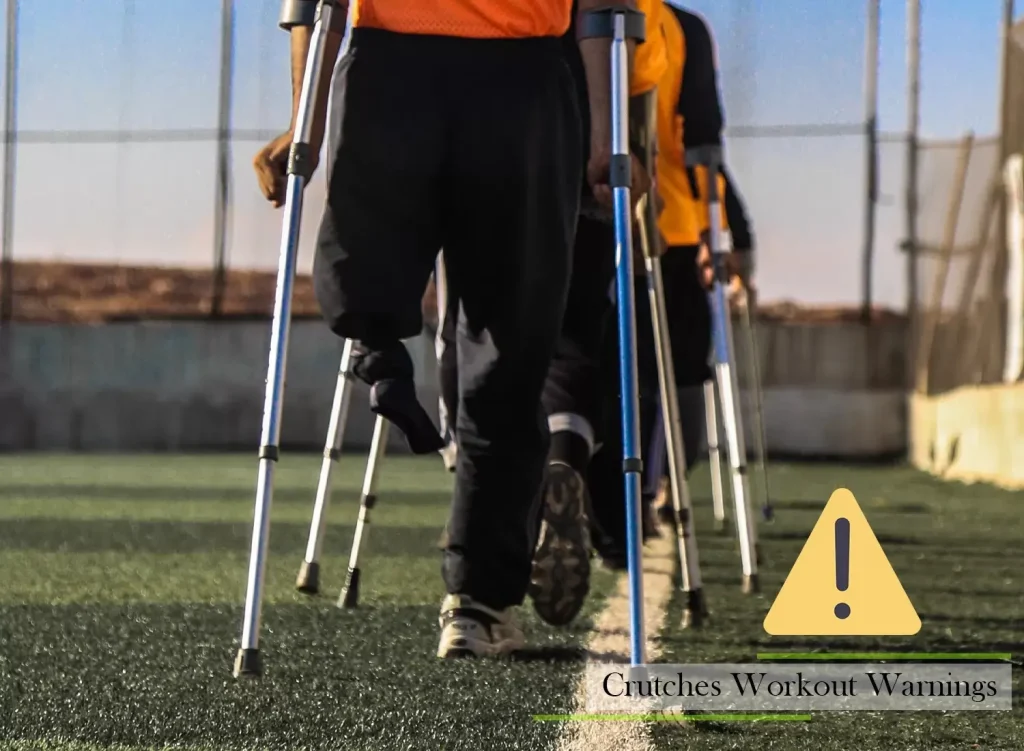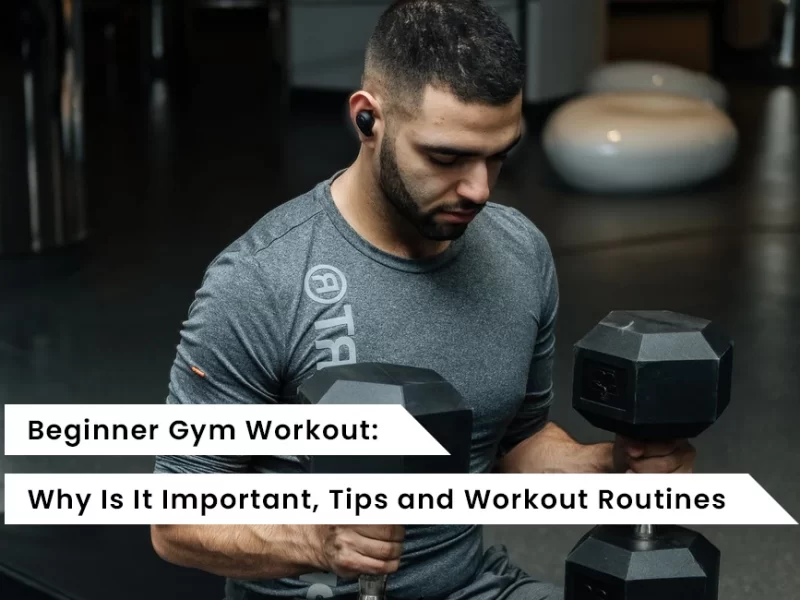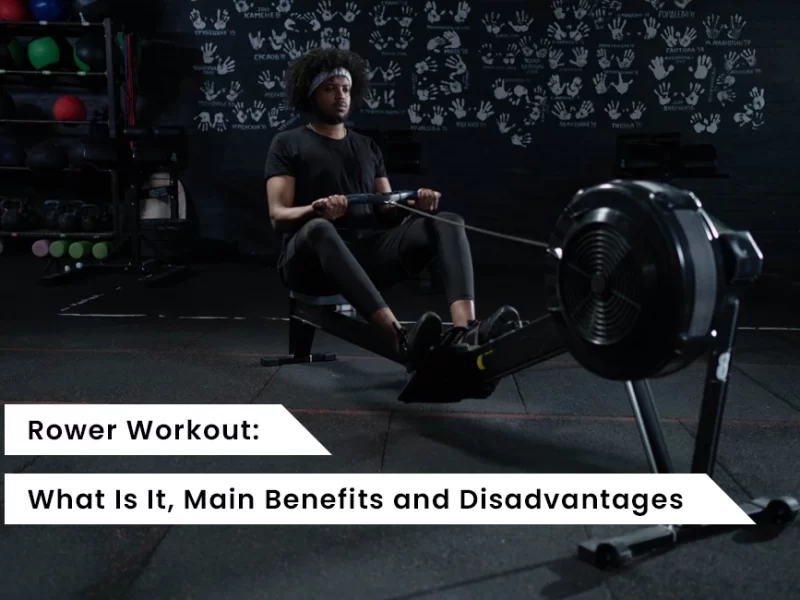Crutches Workout is a fitness program for those who are unable to fully participate in traditional exercise. The program is designed to help you maintain your strength and conditioning during a time of limited mobility. The program consists of exercises, stretches, and physical therapy techniques that help patients regain their balance, strength, and mobility. This section provides information about what Crutches Workout is, who created it, how it works and why they created the program.
What is Crutches Workout?
Crutches Workout is a type of physical therapy that helps people with foot and knee injuries. Crutches are used to help people who have trouble walking on their own due to injury or surgery. The program was created by Dr. Scott Dye, an orthopedic surgeon in Lexington, Kentucky and works on strengthening the muscles in the hips, thighs, and ankles so that patients can walk more easily when they are discharged from the hospital. It is also a great way to relieve stiffness, reduce pain, and improve mobility.
The goal of Crutches Workout is to maintain and improve the strength, range of motion, and endurance of the muscles around the knee joint. It also helps to improve balance, coordination, and flexibility. Crutches Workout is designed to be done at home with minimal equipment. The exercises can be done on either a carpeted surface or a mat.
Why is Crutches Workout important?
Crutches Workout is important because it helps with the recovery of a knee injury by strengthening the muscles around the knee. It also helps to reduce the risk of future injury and to prevent osteoarthritis.
The use of crutches is not only limited to people with broken legs. They can also be used by people who have sprained their ankle, foot, or wrist. Crutches can provide relief to those with arthritis in their hands or wrists as well.
Also, the Crutches Workout is a type of exercise that helps to strengthen the muscles in the hands, wrists and arms. The Crutches Workout can be done with or without weights. If you are new to anavar before and after exercise, start with no weights at all.
See info about Do ab workouts burn belly fat?
Benefits of doing Crutches Workout
Crutches Workout is a new workout routine that has been developed by a physiotherapist and a personal trainer. It is designed to help people who are unable to do traditional workouts due to an injury or illness. A lot of people don’t know that they can use crutches to help them with their workouts. They might not be the first thing you would think of when it comes to exercise but they are a great way to get your body moving and keep your muscles strong.
The Crutches Workout is a great way for people with disabilities or injuries to stay active and get in shape. It is also a great workout routine for people who need something low-impact on their joints.
If you are thinking about using crutches for working out, read on for some benefits that might make you change your mind.
The benefits of doing Crutches Workout include:
- It strengthens the muscles in the upper body, which can help with rehabilitation.
- It helps maintain muscle mass in the lower body, which may decrease the risk of developing osteoporosis.
- It aids in weight loss by burning more calories than traditional workouts.
- It helps reduce back pain and improve posture.
- It’s easy to do anywhere, anytime, and requires no equipment or special skills.
- Builds up your body
- Strengthens muscles
- Physical therapy
- Injury prevention
- Recovery
- Mental break
Disadvantages of doing Crutches Workout
Crutches Workout is a type of exercise that is done by balancing on one leg and using the other leg to do the work. This workout is not advisable as it can lead to injuries.
Some of the disadvantages of doing Crutches Workout are:
- It can lead to injuries because it puts too much pressure on one leg and your whole body, which can cause pain in your hip, knee, or ankle.
- It can also cause back pain because you are bending over while trying to balance on one foot.
- You will have less stability when doing Crutches Workout because you are only using one foot for balance.
- It can cause a lot of pain in the neck.
- It may lead to muscle spasms in the back, shoulders, and arms.
- The weight bearing is uneven, which can also lead to muscle imbalances.
- It can be difficult to maintain balance while doing it..
See also Beginner Gym Workout: Why Is It Important, Tips and Workout Routines
Common Exercises for People on Crutches (Crutches Workout)
Crutches help people in recovery from injury. They are most commonly used by stroke sufferers and those with lower body injuries involving the hips or legs. Exercise is important to maintain mobility following injury, so you should undertake your exercises regularly to minimize any stiffness or pain.
Stair Climbing
Going up the stairs can be a crutch exercise for you to do, whether you have a railing or not. If you do not have a railing available, you can go upstairs by stepping up with your strong leg. Your weight needs to be on your crutch’s hand grips. After you have raised your body onto the stair, let your weak (injured) leg follow. You do not want to put any weight on your weak leg. Finally, bring up your crutches onto the step to hold your body’s weight. You need to make certain that your toes clear the step before proceeding to the next step, if you are wearing a cast.
You can climb stairs while using a railing also. Place both of your crutches underneath your arm on your side that is not against the railing. Hold onto the railing. Step up with your stronger leg. Bring up your weak leg and crutches to the same step. Make certain you lead with your strong leg as you climb the stairs.
Going Down Stairs
Start walking downstairs by reversing the process. This time you need to make certain that your toes are close to the edge of the stairs before moving to the next stair. Place both crutches on the stair below. Lower your injured leg onto the stair. Place all your weight onto the hand grips of your crutches. Step down with your strong leg. Repeat this exercise until you have reached ground level.
Walking downstairs by using a railing can help you. Place both of your crutches underneath your arm opposite the railing. Bring the crutches onto the lower step. Step down with your weak leg. Put your weight onto the railing and crutches. Lower your strong leg.
Walking
Walking is an exercise you can do with crutches, whether you wear a cast or not. Place the crutches 8 to 12 inches in front of you. Place as much weight as possible on your weak leg. Push down on the hand grips and step through with your strong leg. Move your crutches forward and repeat this process. While wearing a cast, push down on your hand grips and keep your weak leg off the floor. You will be stepping through your crutches with your other leg.
Straight Leg Raise
You can do straight leg raises to strengthen your leg muscles. Lie on your back. Place a pillow under the heel of your injured leg. Bend your uninjured leg and place your foot flat on your bed. Lift your injured leg while keeping it straight. Hold this lift for five seconds. Slowly lower your leg to the surface. Repeat this exercise five times.
Yoga
While you won’t be able to perform difficult yoga moves, it’s still one of the best exercises to put your body and mind in tune with each other. Yoga movement and stretches will make you feel balanced and will definitely improve your recovery phase.
It might be difficult for you initially, but not impossible; all you need to do is to try. It’s also possible that you might find some new things that you would want to add to your regular exercise regimen.
Arm Exercises
As long as your arms and hands are okay, you can easily do arm exercises. It will improve your cardio strength. Sit upright on a bench, keep your injured legs in a comfortable position, and carry out the arm strengthening exercises. You have multiple options, including shoulder circles, arm circles, shoulder shrugs, and arm raises. You can even try punching in different directions to strengthen your shoulders and arms. In the primary stage, you can try lightweight resistance bands and gradually increase the weight later. Still, you need to be very careful not to overdo it.
Aquatic Exercise
Because water can support your weight, aquatic exercises are often recommended as part of rehabilitation programs. Depending on the specific nature of your injury, you may do exercises that involve only the upper body or perform lower body exercises such as deep water running. Both cardiovascular and resistance band exercises can be done in the water.
Calf Strengtheners
Strong calf muscles help support your feet while lowering your risks of muscle fatigue, weakness and cramping, says Moller. Strengthen your calf muscles, known as the tibialis posterior, by including some seated heel raises in your exercises for a splayfoot regime. Sit upright in a firm chair, placing both feet firmly on the floor. Slowly lift your right heel as high as possible without removing any toes from the surface. Hold position for 10 seconds. Slowly return to the original position. Relax for 10 seconds. Repeat exercise 10 times. Do exercise again using your left foot.
Side Lifters
Counteracting your foot pronation tendencies by strengthening and stretching your arches plays a key role in helping reduce your splayfoot tendencies, notes Moller. Work on strengthening your arches and foot muscles by doing some seated side lifts. Stand upright with both feet firmly planted on the floor. Hold onto a chair for support. Slowly lift your body weight onto the outside of your foot as you lift your arches from the surface. Hold position for 10 seconds. Slowly return to the original position. Relax for 10 seconds. Repeat exercise 10 times. If lifting both arches simultaneously is too difficult, concentrate on lifting only one at a time.
Ankle Flexing
Exercises for splayfoot need to work on improving mobility as soon as possible after any surgical procedure, according to the Pfaeffikon Center for Orthopedic Surgery. Start by doing some ankle pumps while still in bed. Ankle pumps involve sitting upright in bed, on the sofa or in a firm chair while extending both legs in front of you until your knees are as straight as possible. Gently lift your surgical foot and point your big toe away from you while bending your ankle. Hold position for five seconds. Slowly return to the original position. Relax for 10 seconds. Slowly bend your ankle while pointing your big toe toward your body. Hold position for five seconds. Return to the original position. Relax for 10 seconds. Repeat exercise 10 times.
Suggestion: For building lats, check Latissimus Dorsi Workout: What to Know, Main Benefits and Downsides
Crutches Workout Warnings
The crutch workout is a new fitness trend that has been gaining popularity in recent years. The exercise is seen as a way to strengthen the muscles of the upper body and core.
However, there are some warnings and precautions that need to be taken before starting this type of workout.
The first thing you should know about the crutch workout is that it can be dangerous for people with certain injuries or disabilities. For example, if you have had a hip replacement, it’s not recommended because there’s a risk of dislocation.
Other precautions include not doing this type of workout if you have had recent surgery or injury to your arm or leg. You should also not do this type of exercise if you are pregnant because it can put too much stress.
In addition, a study in the United States found that more than one-third of people who use walking aids such as crutches, a cane, or a walker, have experienced an injury requiring medical attention.
The most common injuries are ankle sprains, followed by knee injuries. The research also found that people who use walking aids are more likely to suffer from other health problems such as high blood pressure and diabetes.
Lastly, crutches are meant for people who need to walk with the help of two sticks because they have some kind of injury. They are not meant for people who want to do some exercises to lose weight or get stronger and healthier.
This is because the crutches are not designed for such pressure on your joints and muscles. They also do not provide any support, so you will be putting your body under stress in order to maintain balance.
Summary and Conclusion
Crutches Workout is a great way to build up your upper body strength. The workouts are easy to do and only take about 15 minutes a day. The main benefit of using crutches is that they can help you avoid the pain caused by back problems, but they can also be inconvenient and difficult to use. If you are a beginner and this is your first time trying out the Crutches Workout, I highly suggest that you start with a lighter weight. This is for safety reasons and also so that your muscles don’t get too sore.
Crutches Workout is that it is a great way to work on balance, strength, and coordination. The Crutches Workout Conclusion can be done anywhere at any time. Crutches Workout is a good exercise to improve your leg muscles. It will help you to walk better and more confidently.
This is a good workout for those who have physical limitations or injuries.
See also Do You Need a Pre-workout Supplement for Running?
